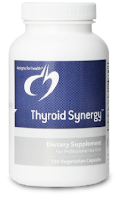
Diindolylmethane, or DIM for short, is a plant indole—a plant compound with health-promoting properties. DIM and other plant indoles are found in all cruciferous vegetables. Cruciferous vegetables include cabbage, broccoli, Brussels sprouts, and cauliflower. Studies have shown that DIM has the ability to reduce the risk of certain cancers, especially those influenced by excessive estrogen levels, such as breast, uterine and prostate.
When DIM increases the ‘good’ estrogen metabolites, there is a simultaneous reduction in the levels of undesirable or
“bad” estrogen metabolites.
DIM contributes to a better metabolism in the most natural way possible by working with your own hormones and
adjusting their action to avoid hormonal imbalance. DIM produces more ‘good’ estrogen metabolites, which compete
with testosterone for protein binding, helping to maintain a slightly higher ‘free’ testosterone level.
Free testosterone is
testosterone that is more active.
The ‘good’ estrogen metabolites along with increased free testosterone promoted by DIM increase fat mobilization and
a fat-burning metabolism.
DIM has three main benefits:
1. Makes estrogen metabolize down the 2-hydroxy estrone pathway
2. Frees up bound testosterone
3. Acts as a natural aromatase inhibitor.
Though still marketed as a dietary supplement, it turns out that I3C (Indole-3-carbinol) is not active in your body until it
has converted into DIM. I3C is highly unstable and can transform into many other substances whose actions are
undesirable.
DIM, is the most active dietary indole in cruciferous vegetables, is a healthy stimulus for the beneficial metabolism of
estrogen in men and woman. Maintaining healthy hormonal balance no matter your age improves how you look and
feel.
*The majority of this article is information obtained from the book “All About DIM” by Michael A. Zeligs, MD and A. Scott Connelly, MD.




